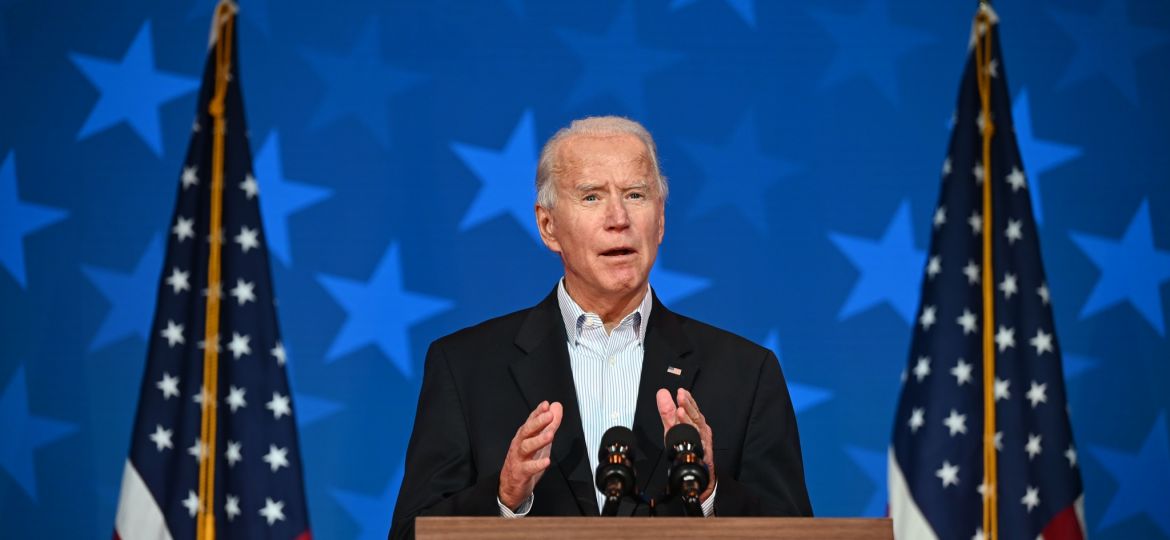
LAWRENCE, Kan.— What was it that compelled white voters to choose Donald Trump in the 2016 presidential election – but not necessarily the 2020 election – in the battleground states of the Midwest?
“We see a great deal of regional variation. White voters are not a monolithic block. They don’t all behave the same way,” said Eric Hanley, associate professor of sociology at the University of Kansas.
His new scholarly article, “The Heart of Whiteness: Patterns of Race, Class and Prejudice in the Divided Midwest,” examines these regional variations in battleground states during the 2016 election. It’s included as a chapter in a volume titled “Political Landscapes of Donald Trump,” published by Routledge. The book is edited by Barney Warf, KU professor of geography.
Co-written with David Norman Smith, KU professor of sociology, this research initially keyed on education level and geography as the main factors that united the white vote behind the 45th president.
“There’s a lot to be said for the fact that education explains a great deal of the way whites vote, with less-educated people moving staunchly into the GOP camp,” Hanley said. “Although we shouldn’t exaggerate that because they’ve been there already. We’ve seen a strong shift in that direction going all the way back to the move of Southern Democrats into the Republican Party under the Nixon administration.”
However, “The Heart of Whiteness” determines that one factor among whites voting in 2016 trumps all the others.
“A lot of it is based on xenophobia and – to put it somewhat impolitely – racism,” he said.
Actually, Hanley prefers the term “racial resentment” as more representative of the attitudes that shaped this balloting bloc.
“It’s important to make a distinction that we’re not necessarily saying these people are evil, but they have resentments that get channeled in a direction toward blaming both immigrants and ‘undeserving domestic groups’ for their plight,” he said.
His book chapter explains how white voters only favored Trump when concurring with his bigotry. Less-educated voters supported him in large numbers because “they were exceptionally likely to share his prejudices against immigrants, minorities, Muslims, women and authority figures who defended those groups.”
Qualitative research into this demographic found a “strong emotional sense of resentment.”
“It’s basically the idea that racism has taken a new form,” he said. “It’s certainly not the old-fashioned ‘whites are superior’ kind. It also brings considerations about achievement merit into the discussion.”
Another notable finding in the authors’ studies involved the concept of Domineering Leader (which they call DL). Smith has written on authoritarianism from a theoretical perspective for much of his career. Together, Hanley and Smith determined this DL scale was reflected in Trump’s electoral success.
Respondents’ scores are correlated with their attitudes regarding minorities, gender roles and feminism. The higher one’s education, the lower one’s score on this scale that embraces authoritarian values.
Hanley says concerns about Trump’s authoritarian tendencies are comparable to several populist leaders in Europe.
“I teach classes in globalization, and if you look at works in the 1990s and early 2000s, there was a sense among global elites and journalists that there wouldn’t be any kind of nationalist backlash toward globalization,” he said. “Economics would win out over ethnic attachments. And really we’ve seen a sea change in academics because that didn’t happen. We’re seeing signs of backlash everywhere.”
Within the U.S., geography became crucial to the spread of Trump’s base, with the pivotal Midwestern battleground states (Michigan, Pennsylvania, Ohio, Wisconsin and Iowa) taking center stage. But Hanley and Smith’s research complicated how this was interpreted. In 2016, for example, Trump won more votes from less-educated whites than Romney did in 2012, but only in the South and Midwest. Trump earned less votes (compared to Romney) from whites in the Northeast who didn’t have four-year college degrees.
The authors contend that “white voters without college degrees are no more easily pigeonholed than college-educated voters.” What they share in the South and Midwest often divides them from their counterparts elsewhere.
“Trump won those swing states in the upper Midwest in 2016, but Biden won them back,” said Hanley, whose expertise centers on political sociology. “What appears to be the case in 2020 is that Biden won over more of those educated white voters in the upper Midwest.”
He believes Biden’s improved showing over Hillary Clinton with these voters also reveals a continuing pattern that will move beyond education, geography and racism during the 2024 election cycle.
“I think you’ll see more change when it comes to sexism — really attitudes toward feminism and gender roles,” he said.
“It’s unsurprising Biden did better among white males … because he’s not a woman.”

